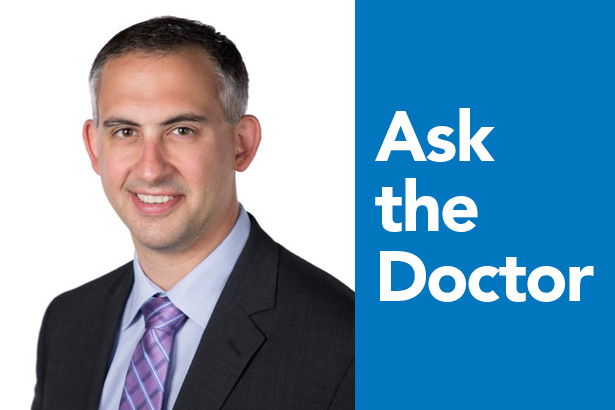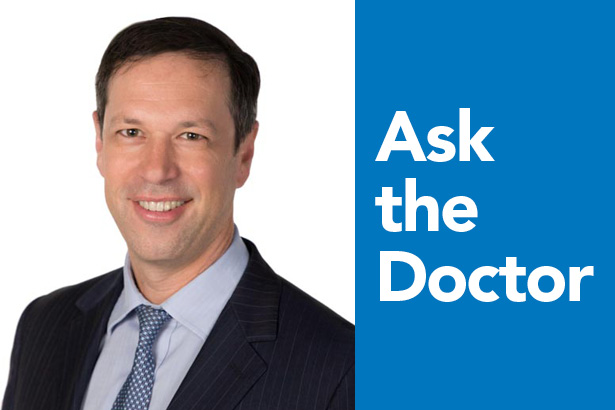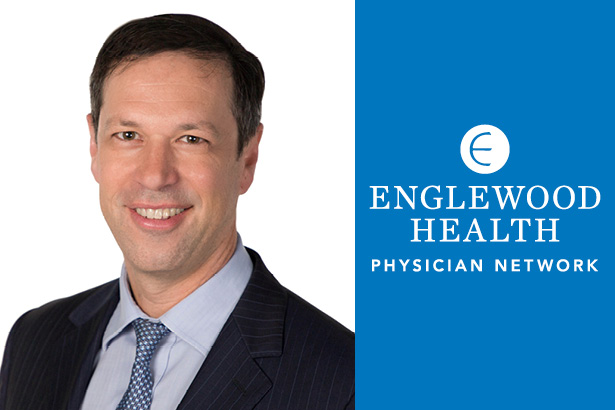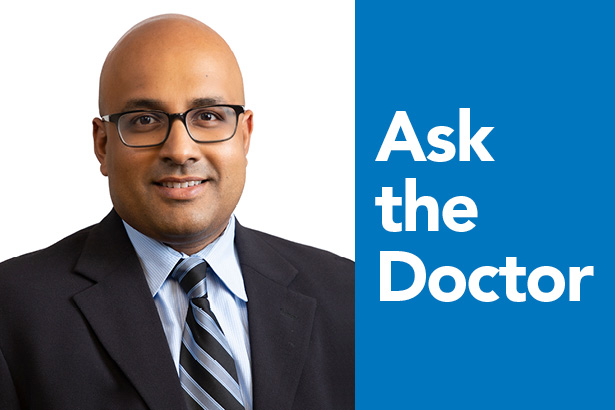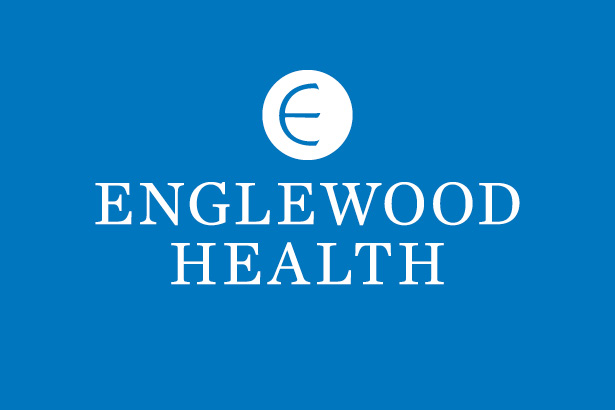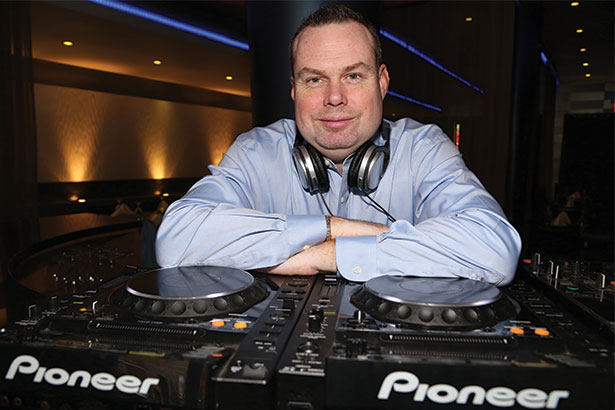Ask the Doctor: Dr. David Feigenblum
What options are there to protect someone with a weak heart?
Dr. Feigenblum: When abnormal electrical signals in the ventricles cause the heart to beat too rapidly (tachycardia) or just quiver (fibrillation), an implantable cardioverter defibrillator (ICD) can save a person’s life. Patients at risk typically have a weak heart muscle due to coronary artery disease, prior heart attack, or heart infection. Other risk factors include previous cardiac arrest and certain genetic factors. The internal device is implanted in the chest. When it detects a dangerously fast heartbeat, it delivers a small (or sometimes large) electrical shock to restore the normal heart rhythm.What’s involved in the implantation of a cardioverter defibrillator?
Dr. Feigenblum: ICDs are implanted through a minor surgical procedure at the hospital. Patients stay overnight and go home the next day. The device will continuously monitor the heart’s rhythm, detect abnormalities, and deliver treatment. Pacing therapy is painless, so patients generally don’t feel anything.Will an ICD help me live longer? Give me better quality of life?
Dr. Feigenblum: Essentially, patients have no restrictions after the initial recovery period. They often want to know if they can travel. The ICD allows them to go about their normal lives with the assurance that they are protected. If a patient experiences a cardiac event, the system can transmit the information from the defibrillator over a phone line. The medical team can then log in to a secure site and see what is going on without the patient having to come in to the hospital.What options are there beyond ICDs?
Dr. Feigenblum: At Englewood Health, we have a full-service and highly experienced electrophysiology team. In addition to pacemakers and ICDs, our team implants resynchronization devices in advanced heart failure patients, which can significantly improve quality of life. We also routinely perform procedures to treat atrial fibrillation and ventricular tachycardia, as well as a range of other cardiac tests and procedures. Posted February 2019What to Do If You Are Concerned About Someone’s Mental Health or Substance Use
Mental health and substance use are increasingly common and we all need some basic tools and skills to assess, support and protect people experiencing these disorders. A behavioral health crisis can take many forms—self-harm, panic attacks, suicidal ideation, overdose on drugs or alcohol—but no matter what kind of crisis someone might be going through, you can help.
Make sure to stay with your loved one while they’re at risk and do not hesitate to get them professional help. The most important thing you can communicate in a crisis is that you are concerned for your loved one’s well-being, and that they can lean on you for support. Use an empathetic, non-judgmental tone to encourage your loved one to talk about how they feel. Avoid minimizing their problems or giving advice as this may create distance between you and upset them further. Reassure them that whatever they’re experiencing is not their fault.
Remember that you are not a trained professional; if you feel out of your depth you may want to include other family members, your place of worship, community groups, or local crisis services for additional support. It’s important not to be afraid to ask directly if they are thinking about suicide. This question does not make someone become suicidal but it does help both of you determine what to do next. Allow your loved one to stay in control. Offer them choices on how you can help them. Reassure them that it’s okay to seek help, even if they think that they can cope without it. Usually your loved one will agree they need help; sometimes however, you may need to unilaterally make this decision if you decide it could be in their best interests and personal safety.
Help your loved one develop a crisis plan before a crisis happens. A crisis plan is a document that contains important information and outlines how to manage a crisis situation, such as:
- Phone numbers of mental health professions, family members and friends
- A list of current prescription medications, doses and diagnosis
- Any history of suicide attempts, psychosis, hospitalizations or drug use
- Triggers and coping mechanism that have helped in the past
People may need a crisis intervention and/or go to the hospital if they:
- Threaten or try to take their lives or hurt themselves or others
- See or hear things (hallucinations)
- Believe things that aren’t true (delusions)
- Have problems with alcohol or substances
- Have not eaten or slept for several days
- Are unable to care for themselves or their families, e.g., getting out of bed, bathing, dressing
- Need to make a significant switch in treatment or medication under the close supervision of a doctor
- Have any symptom of mania or depression that significantly interferes with life
Resources
Call 911 or go to the Emergency Department if it is a life-threatening emergency. Notify the 911 operator that it is a psychiatric emergency and ask for an officer trained in crisis intervention or trained to assist people experiencing a psychiatric emergency.
In a non-life-threatening emergency, Bergen County’s Designated Psychiatric Emergency Screening Program (201-262-HELP/4357) will connect you with a crisis specialist who can come to your home and provide mental health evaluations, crisis intervention counseling, and assessment for services. Open 24/7.
Englewood Hospital Inpatient Psychiatry (201-894-3142). Our inpatient unit is for adults requiring a brief admission for assessment, monitoring, and stabilization of symptoms.
NJ Mental Health Cares (866-202-HELP (4357) is New Jersey’s behavioral health information and referral service. Open Monday-Friday, 8 a.m. – 8 p.m.
IME Addiction Access Center (844-276-2777) can provide information about substance use services throughout NJ. Open 24/7.
Reach NJ (844-732-2465) helps people with Medicaid or who are uninsured find an appropriate inpatient facility. Open 24/7.
National Suicide Prevention Lifeline (800-273-TALK/8255) has trained crisis counselors to speak with 24/7.
Crisis Text Line – Text NAMI to 741-741 to connect with a trained crisis counselor to receive crisis support via text message.
Mental Health and Substance Use: By The Numbers
There are an estimated 44.7 million adults (that’s 18.3% of all U.S. adults) with a mental illness; 10.4 million of these adults had a serious mental illness (that’s 4.2% of all U.S. adults) significantly impacting their daily life. In the past year, 20 million adults (8.4%) had a substance use disorder. Almost 8 million American adults battled both a mental health disorder and a substance use disorder (co-occurring disorders).
Information referenced from NAMI 2017, SAMHSA 2014, Depression & Bipolar Support Alliance website.
Englewood Health Announces New Trustee Appointments
February 6, 2019 — Several local community leaders have been named to the Boards of Trustees of the Englewood Healthcare System, Englewood Hospital, and its fundraising organization, the Englewood Health Foundation. Joining the healthcare system’s board are Gregg Lobel, MD and Steven Rudnitsky; joining the hospital’s board is Jonathan Lefcourt; and joining the Foundation’s board are Susan Marenoff-Zausner, Matt Wasserlauf, and Alexandra Gottdiener, MD.
“These appointments come at a time of growth and expansion for the organization,” said Thomas C. Senter, chairman of the Board of Trustees of Englewood Health. “Our trustees play a crucial role in strengthening the healthcare system and helping advance its mission as we set and meet even higher standards of care in the years to come.”
“We recognize the value that each of our new Board members will bring to the table. They will be key players in building upon Englewood Health’s community impact,”said Jay C. Nadel, chairman of the Board of Trustees of the Englewood Health Foundation.
“We’re excited to add new talent to our governing boards, whose vision and unique perspectives will help us move our mission forward,” said Warren Geller, president and CEO of Englewood Health. “Their insight and guidance allows us to build upon our medical excellence and innovate further to benefit the communities we serve.”
Englewood Healthcare System
Gregg Lobel, MD is chief of anesthesiology at Englewood Health, specializing in pediatric anesthesia. He is a past president of the medical staff at Englewood Health, treasurer of the New Jersey State Society of Anesthesiologists, and serves on the Committee on Patient Blood Management of the American Society of Anesthesiologists, for which he is a delegate. He is also a member of the Society for Pediatric Anesthesia, American Academy of Pediatrics, International Anesthesia Research Society, Medical Society of New Jersey, and the Society for the Advancement of Blood Management. Dr. Lobel earned his MD at Mount Sinai School of Medicine and completed postgraduate training at Maine Medical Center, Mount Sinai Medical Center, and Children’s Memorial Hospital. He is currently an assistant clinical professor of anesthesiology at the Icahn School of Medicine at Mount Sinai. Dr. Lobel is the co-author of numerous articles that have appeared in peer-reviewed publications, and has contributed chapters to several books. He has volunteered on close to a dozen international medical missions with Healing the Children, a local nonprofit providing access to medical care and services for children in need throughout the state and worldwide. Dr. Lobel is also a member of the Englewood Hospital Board of Trustees.
Steven Rudnitsky, a corporate president and CEO since 1999, has been recognized for his management capabilities and leadership roles in publicly traded companies, as well as working in private equity environments, growing and stabilizing new businesses, turning around distressed businesses and driving shareholder value. He has served some of the country’s most widely known brands, from iconic consumer packaged-goods companies including Johnson & Johnson, Pepsi Co, Pillsbury,Kraft Foods, and Nabisco, to leading hospitality companies including Cendant Corporation, Wyndham Worldwide, Dolce Hotels & Resorts, Miraval Group and Hyatt Hotels Corporation. Among his key accomplishments, Rudnitsky initiated and facilitated the sale of Dolce Hotels & Resorts to Wyndham Worldwide and Miraval Group to Hyatt Hotels Corporation. Rudnitsky earned his MBA from Farleigh Dickinson University and his BBA from Temple University. He was appointed to the Englewood Hospital Board of Trustees in 2014.
Englewood Hospital
Jonathan Lefcourt is the president and CEO of Alliance Shippers Inc., a global provider of logistics services, headquartered in Englewood Cliffs. Lefcourt got his start in the logistics industry over 34 years ago with his family-owned transportation and shipping businesses. His responsibilities included customer relations, inventory management, supply chain warehousing, and consolidation. Prior to his appointment, Lefcourt served as vice president of information technology for Alliance Shippers Inc. His oversight of new systems and technologies spurred company growth and he was integral in instituting significant company-wide efficiencies. Lefcourt graduated summa cum laude from Fairleigh Dickinson University with a Bachelor of Science in Accounting.
Englewood Health Foundation
Alexandra Gottdiener, MD has been the chief of medicine at Englewood Health since 2009. Prior to that appointment she was the program director for the internal medicine residency program, and has been a member of the Department of Medicine faculty since 2001. Dr. Gottdiener established the patient safety and quality improvement curriculum at Englewood Health and continues to lead the patient safety curriculum as well as mentor residents in quality improvement projects. In addition, Dr. Gottdiener has chaired and served on numerous medical staff quality and patient safety committees for Englewood Health. She received her MD from the University of Illinois-Chicago and completed her internal medicine residency training at NYU/Bellevue in New York City, where she was also a chief resident. Dr. Gottdiener is a fellow in the American College of Physicians, and a member of the Society of Hospital Medicine and the American Association for Physician Leadership. She is an alumna of the 2013 Quality and Safety Educators Academy of SHM and is a faculty mentor in QI for that organization.
Susan Marenoff-Zausner serves as president of the Intrepid Museum, an organization she joined as chief marketing officer in 2004, after which she became executive vice president of business development and, shortly thereafter, executive director. Earlier in her career, Marenoff-Zausner spent eight years with Madison Square Garden, culminating with the title of vice president of client services. She was recruited by the Women’s World Cup in 1998 to be the Giants Stadium venue director for the 1999 championship games, and briefly served as external marketing director of the U.S. Women’s Tennis Association. From 2000 to 2003 she was general manager of the New York Power, which was a professional women’s soccer team. Marenoff-Zausner serves as a member of the board of directors at the Kaplen JCC on the Palisades.
Matt Wasserlauf is founder and chief executive officer of Torrential, Inc., a company connecting brand advertisers with desired audiences by selling and distributing premium video advertising formats. He is the author of Start-Up SOLD (2012), the story of how he started, built and sold Broadband Enterprises (BBE), the first online video network. Wasserlauf founded BBE in 2004, serving as chief executive officer. In 2009, he was a finalist for the Ernst & Young Entrepreneur of The Year Award in the New York metropolitan region. Previously, he was vice president of The Feed Room and an account executive for Warner Brothers. Wasserlauf also serves on the board of the TD Foundation, a 100-percent volunteer organization that aids wounded warriors and their families in need. It has shipped school supplies, medical supplies, vitamins, and donated clothes and toys, and has funded more than 30 life-saving surgeries for severe burns, orthopedic reconstructions, and heart repairs.
Minimum Wage at Englewood Health Increases to $15/hour
February 1, 2019 – Englewood Health, the health system comprising Englewood Hospital and the Englewood Health Physician Network, has increased its minimum wage to $15/hour. The increase will be effective for eligible employees by the end of 2019.
“We are delighted to offer this significant increase to many of our valuable employees,” said Warren Geller, president and CEO of Englewood Health. “The decision to increase our minimum wage is a reflection of the important work that our front line and support staff do for our patients and community everyday and our commitment to being an employer of choice.”
This move comes five years earlier than the implementation of the New Jersey state law mandating a $15 minimum wage.
Englewood Health is the largest employer in the city of Englewood and a major driver of the economic health of the city.
Protecting a Weak Heart with an ICD
Englewood Health’s David Feigenblum, MD, PhD, a cardiac electrophysiologist (specialist in abnormalities of the heart’s electrical system), diagnoses and treats a range of heart rhythm disorders. Ventricular arrhythmias, which occur in the heart’s two lower chambers, or ventricles, can put patients at risk of sudden cardiac arrest and death.
When abnormal electrical signals in the ventricles cause the heart to beat too rapidly (tachycardia) or just quiver (fibrillation), an implantable cardioverter defibrillator (ICD) can save a person’s life.
To help us understand ICDs, Dr. Feigenblum explains…
ICDs and S-ICDs
Patients at risk of developing ventricular arrhythmias typically have a weak heart muscle due to:
- coronary artery disease
- prior heart attack
- heart infection
Others risk factors are a previous cardiac arrest, as well as certain genetic factors.
An ICD is an internal device that is implanted in the chest. When it detects a dangerously fast heartbeat, it delivers a small (or sometimes large) electrical shock to restore the normal heart rhythm. Its purpose is to prevent sudden cardiac death.
The two main types of ICDs are:
- Transvenous ICD—implanted with wire leads through the vascular system to the heart, it continuously monitors the heart’s rhythm and acts as both a pacemaker and a defibrillator.
- Subcutaneous ICD (S-ICD)—for patients with no condition requiring transvenous leads, this device uses an electrode near the heart to detect arrhythmias and deliver therapy. An S-ICD is often a good option for younger patients, such as those with a genetic heart condition, as it minimizes hardware and saves vascular space for any future interventions that may be needed.
Both types of ICDs are implanted through a minor surgical procedure in Englewood Health’s Electrophysiology Lab. Patients stay overnight in the hospital and go home the next day.
Quantity and Quality of Life
In electrophysiology, the focus is on quality, as well as quantity, of life. Generally, there are two things that patients want to know:
- Is it going to improve my quality of life?
- Is it going to extend my life?
For most patients, their biggest fear is how one lives life with a defibrillator. Their main questions concern what happens if the defibrillator detects that the heart needs to be “shocked” back into rhythm. Modern ICDs, which serve as both pacemaker and ICD, have two functions:
- Pacing therapy—this therapy is painless; the patient generally doesn’t feel anything.
- Shock therapy—the electrical shock, if needed to restore the heart’s rhythm, may last only a second. The shock, which can feel like a strong jolt, provides immediate therapy to treat a life-threatening arrhythmia. For patients who are awake when it occurs, it can be emotionally overwhelming, and our team is available to provide support.
Advances in Defibrillator Therapy
A study published in 2015 demonstrated the effectiveness of a new algorithm that has changed how electrophysiologists manage ICDs. In the past, patients were sometimes shocked unnecessarily. Today, the way we program the devices has significantly reduced unnecessary shocks to the heart; hence, when a patient is shocked, it is usually needed.
Few Restrictions for Patients with ICDs
We focus on quality of life for our patients. Essentially, patients have no restrictions after the initial recovery period. Patients often want to know if they can travel and might ask, “What if I am in Timbuktu?” I reassure them that the purpose of the defibrillator is to allow them to live a normal life, and I offer this analogy: It is as if you are walking around with your own ambulance crew. The device allows you to go about your life with the assurance that you are protected.
Remote Monitoring
We follow our patients through remote monitoring of their device. If a patient experiences a cardiac event, the system transmits the information from the defibrillator over a phone line. The data from their device goes to the “cloud,” and our team can log in to a secure site and see what is going on without the patient’s having to come in to the hospital’s emergency department. Since the device works globally, they can go to Timbuktu and still have continuity of care. We can follow them wherever they go.
Beyond Cardiac ICDs
At Englewood Health, we have a full-service and highly experienced electrophysiology team. In addition to pacemakers and ICDs, my partners and I implant resynchronization devices (also known as biventricular pacing) in advanced heart failure patients, to improve quality of life. We also routinely perform ablation procedures to treat atrial fibrillation and ventricular tachycardia, as well as a range of other cardiac EP tests and procedures.
Dr. Feigenblum’s Philosophy
As a physician, I see my role as that of an educator—educating my patients on their condition and options, and on how I, as an electrophysiologist, can help them have a better quality of life. I explain treatment options, so my patients, along with their family, can make their own decision. I try to treat every patient as a family member. I ask myself, if this were my mother, whom I love dearly, how would I treat this condition?
David Y. Feigenblum, MD, PhD, is medical director of the implantable cardioverter defibrillator (ICD) center at Englewood Health, and a member of the Englewood Health Physician Network. He practices at North Jersey Electrophysiology Associates and Northvale Cardiology. In addition to English, he is fluent in Hebrew.
Posted January 2019
Ask the Doctor: Dr. Ashwin Jathavedam
Ashwin Jathavedam, MD, is chief of infectious disease at Englewood Health, and a member of the Englewood Health Physician Network.
All across northern, central, and southern New Jersey, rates of the flu are hitting a fever pitch uncharacteristic of mid-January—a byproduct of the flu beginning to circulate a few weeks early this year. According to the NJ Department of Health, H1N1 (perhaps the most well-known of the flu strains) is the source of the largest number of flu cases seen in minute clinics, doctors’ offices, and hospitals throughout the state. The Centers for Disease Control and Prevention reported that 80,000 Americans—including 150 children—died during last year’s flu season. The threat remains high for this season. New Jersey has already seen its first pediatric death—a child from Central Jersey who died in late December. With flu rates expected to peak at the end of this month, Dr. Jathavedam discusses what we can do to protect ourselves for the duration of the season.
Why do rates of the flu (and other illnesses) skyrocket during late fall/early winter?
Dr. Jathavedam: Data has shown that cold weather enhances transmission rates. Also, in the fall and winter, people are inside more often than not. It’s an epidemiologic phenomenon—viruses spread much more easily when we are in closer proximity and indoors with each other.
When is the optimal time for a flu shot? Is it too late for this season?
Dr. Jathavedam: The best time for a flu shot is around mid-October. This gives you enough time to develop immunity before the season starts, and it’s late enough to keep you protected through most of the season. But it’s not too late to get a flu shot this year. The flu will be a threat until March, so, there’s still time to get immunized and be protected for the rest of the flu season.
How is it that some people get their flu shot and still manage to get sick?
Dr. Jathavedam: The flu shot is not always an exact match for the viral infection circulating at any given time. Often there are multiple strains of the flu going around, some of which your particular flu shot may not offer protection from. Also, everyone’s body reacts differently to the shot. Some people may produce more antibodies in reaction to the shot while others produce less.
If we do get sick, what symptoms might differentiate the flu from other viruses floating around?
Dr. Jathavedam: The flu is almost always accompanied by a high fever. If you don’t have a fever, it’s a safe bet that you don’t have the flu. The flu also causes body aches and severe headaches. The common cold is more often associated with sinus and chest congestion, rather than body aches and headaches.
What would you say is the most common misconception about the flu?
Dr. Jathavedam: That the flu shot doesn’t work. Decades of evidence shows the shot does work and that it decreases the number of flu-related deaths each year. Another fallacy is that the flu shot gives you the flu. I think this misconception arises every year because lots of other viruses are out there during flu season. So if a patient gets sick with a cold one or two weeks after they get their flu shot, they associate it with the shot. In truth, there are no live viruses in the flu shot, so it’s impossible to get the flu from the shot.
Posted January 2019
New Procedure for Carotid Artery Disease at Englewood Health
January 14, 2019 — Englewood is among the first hospitals in New Jersey to offer new minimally invasive procedure to help prevent stroke.
Englewood Health is one of the first hospitals in New Jersey to offer a new, minimally invasive procedure to treat severe carotid artery disease, a condition in which plaque builds up inside the arteries and can lead to a stroke. The procedure, called transcarotid artery revascularization (TCAR), is unique in that blood flow is temporarily reversed during the procedure so that any small bits of plaque that may break off in the artery are diverted away from the brain, which helps prevent a stroke. A stent is then placed inside the artery to stabilize the plaque, minimizing the risk of a future stroke.
Up until to now, the main treatment options for severe carotid artery disease were an open surgical procedure called carotid endarterectomy, which while safe and effective, may not be appropriate for high-risk patients, and stenting from the groin, which has a greater risk of complications.
“TCAR is an important new option for the treatment of severe carotid disease,” says Dr. Thomas Bernik, chief of vascular surgery at Englewood Health. “The procedure is particularly suited for patients who are at higher risk of complications from carotid surgery due to age, anatomy, or other medical conditions. This safer, minimally invasive approach can lead to better outcomes and a faster recovery.”
Englewood Health Appoints Two New Executives to its Leadership Ranks
January 10, 2019 — Englewood Health has appointed two new executives to its leadership ranks, expanding the team dedicated to patient-centered care, quality, and safety. Vicki Hoffman has joined Englewood Health as vice president of operations and Jamie Ketas has been appointed vice president of quality.
Vicki Hoffman
As vice president of operations, Hoffman will have responsibility for many of Englewood Health’s ancillary and outpatient services, including The Lefcourt Family Cancer Treatment and Wellness Center, laboratory, pharmacy, rehabilitation services, and respiratory care.
“We are very excited to have Vicki join the team,” says Helene Wolk, senior vice president of operations at Englewood Health. “She is a seasoned healthcare leader, who I am confident will make an immediate contribution to Englewood Health and to the communities we serve.” She added, “Vicki’s natural talent at constructing highly effective teams and building consensus across a variety of stakeholders, combined with her deep experience in healthcare operations, will enable both the hospital and the physician practices to continue to flourish as we evolve to meet the needs of our communities.”
Hoffman has over 25 years of experience in healthcare operations and has worked at some of the region’s top institutions including Hospital for Special Surgery and the University of Pittsburgh Medical Center. She joins Englewood Health from Stamford Health, where she was service line director for over 10 years, overseeing a variety of clinical services including orthopedics, neurosciences, women’s health, and pediatrics.
After receiving her BA in organizational behavior and communications from New York University, Hoffman went on to achieve an MPA with a certificate in non-profit management from Villanova University. She also holds a certificate in ministry from Princeton Theological Seminary and is a fellow of The Advisory Board Company.
Jamie Ketas
As vice president of quality, Ketas will provide executive oversight of all inpatient and ambulatory quality efforts, business intelligence, patient engagement, care transition teams, and research operations. A key part of her role will be to partner with physician leaders and administrators to coordinate system-wide activities to improve and enhance performance, quality patient care, and customer service.
“Jamie has proven herself an effective leader and a champion in the relentless pursuit of quality,” says Kathleen Kaminsky, senior vice president patient care services and chief nursing officer at Englewood Health. “We are delighted to promote her to this important role and know that with her keen clinical and business acumen, we’ll be able to leverage data, research, and best practices to ensure that the highest quality care is available for our community. We will also be able to continue improving population health locally.”
Ketas has been a member of the team at Englewood Health for nearly eight years, most recently serving as senior director of research and care transitions, responsible for all research initiatives as well as population health. Prior to that she was director of the hospital’s Clinical Research Center and Institutional Review Board. Ketas previously held a variety of progressive positions focused on clinical research at Weill Cornell Medicine, Memorial Sloan Kettering Cancer Center, and the Aaron Diamond AIDS Research Center. After receiving her BS in biology from the University of Notre Dame, she earned an MS in management with a graduate certificate in clinical trials management from Thomas Edison State University. She is also a fellow of The Advisory Board Company.
Keith Wilhemson — Schoolteacher, DJ, Family Man — Chooses Englewood for Rectal Cancer Treatment

“Initially I thought my stomach pains were a result of stress — my job can be pretty straining sometimes. Then around April 2018, I started noticing a change in my system. I was having to run to the bathroom more than is normal for me,” Keith Wilhemson says.
He visited a doctor for his stomach issues and was told it was likely a bacterial infection.
“I was really lucky because before my doctor prescribed me the medicine, he decided to do a colonoscopy just in case. That’s when they found the tumor,” Wilhemson said.
He was diagnosed with locally advanced rectal cancer.
Three kids under the age of nine, a loving wife, a fulfilling career as a Paterson schoolteacher, and a side gig as a DJ were all more than enough reasons to keep Keith fighting through cancer treatment.
“My wife and I did our due diligence. We spoke to people at different hospitals, including one where we have some family friends working. Ultimately, we just felt very comfortable at Englewood Health. With them, everything was on the table. They were extremely open with us and that really gained our trust,” Wilhemson says.
Wilhemson underwent nearly six weeks of radiation and chemotherapy. In September, Anna Serur, MD, chief of colorectal surgery, removed the tumor from his colon. He will soon undergo additional chemotherapy, the last portion of his treatment plan.
Wilhemson has healed well from surgery. The last couple months have been spent at home with his 8-year-old twin boys and his 2-year-old daughter. Wilhemson says this time has given him a renewed appreciation for all the stay-at-home parents out there.
“My experience with treatment has been really positive. When I went in for my infusions, I always messed around and joked with the team. They gave me a funny certificate when I finished my infusions. Now they’re actually planning their Christmas party and are having it at the restaurant where I DJ on the weekends. I think I’ve made some friends that will last beyond treatment,” Wilhemson says.
His surgeon, Dr. Serur, says, “We worked together with Keith and his family to provide the best long-term outcome and not to disrupt his life. Most importantly, we wanted Keith to continue smiling and doing what he loves best. We tailored his treatment without compromising his quality of life. He and his family went to Ireland in between his treatment and surgery, he took his kids to Disney World, and he celebrated his children’s birthday parties with a bash.”
Posted January 4, 2019

